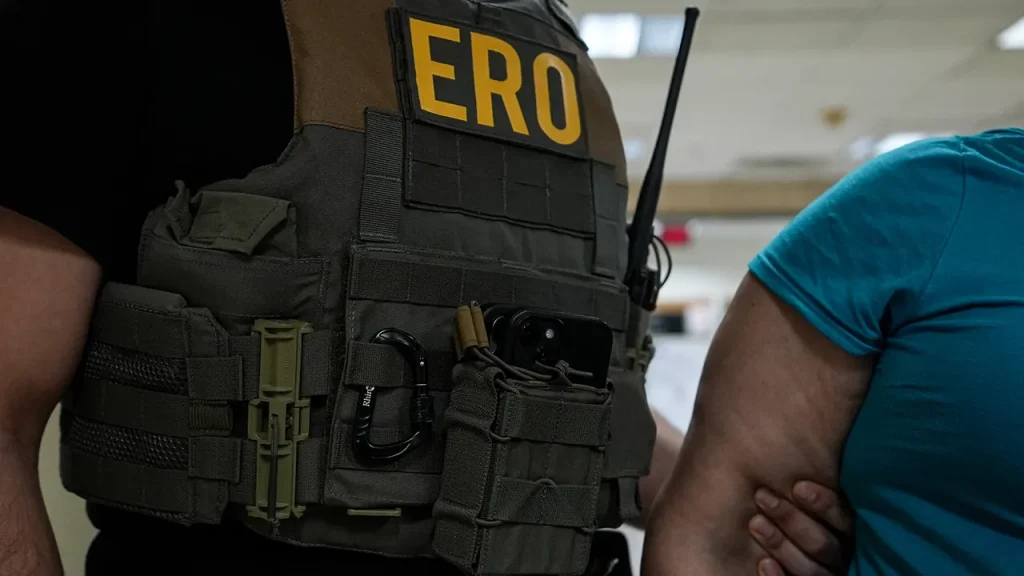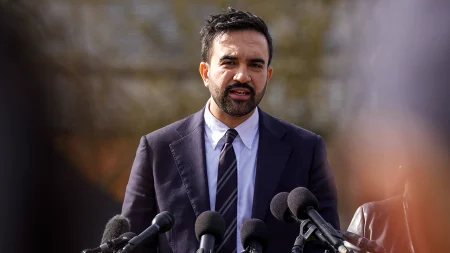ICE Courthouse Arrests to Continue Despite Legal Challenge
Federal Judge Upholds ICE’s Courthouse Arrest Policy
A significant ruling came down Friday when Federal Judge P. Kevin Castel determined that Immigration and Customs Enforcement (ICE) agents can continue making courthouse arrests in New York City. The decision effectively dismissed a challenge brought by the American Civil Liberties Union (ACLU) and various immigrant rights groups who had sought to halt the practice. Judge Castel, who was appointed during the George W. Bush administration, examined the evidence and found insufficient grounds to conclude that ICE’s courthouse arrest policy changes were “unexplained, arbitrary and capricious.” The judge recognized that while the 2025 guidance is “more expansive and permissive” regarding such arrests, these changes were necessitated by practical realities: many local correctional facilities and prisons—typically considered “safe” locations due to security screening protocols—have become unavailable to ICE because of state and local policies refusing to honor immigration detainers.
Partial Victory for Immigrant Advocates Amid Broader Enforcement Policies
While largely ruling in favor of ICE’s courthouse arrest practices, Judge Castel did provide one significant limitation by blocking a Department of Justice policy that had encouraged immigration judges to dismiss cases specifically to facilitate immediate ICE arrests of migrants. This represented a partial victory for immigrant advocates who have been battling what they view as increasingly aggressive immigration enforcement tactics. The controversy stems largely from an initiative launched during the Trump administration in June that specifically targeted unauthorized immigrants following their asylum hearings. This approach has generated considerable debate, with critics arguing it creates a perverse incentive structure—discouraging migrants from attending their legally mandated hearings for fear of arrest, while potentially targeting individuals who lack additional criminal histories beyond their immigration status violations.
Social Media Fuels Emotional Response to Courthouse Arrests
The emotional impact of these courthouse arrests has been amplified through social media, where videos of ICE agents detaining migrants after hearings have gone viral. Some critics have used provocative language, even characterizing these arrests as “kidnappings” rather than legitimate law enforcement actions. The intensity of public response reflects the deeply polarized nature of immigration policy debates in America today. Diana Konaté, deputy executive director of Policy and Advocacy at African Communities Together, expressed this sentiment in stark terms through a statement published by the ACLU: “In its fervor to expel as many immigrants as possible from the country, the Trump administration is targeting immigrants in the very place set up to adjudicate their status: immigration court.”
Fear as Immigration Policy Tool Creates Dilemmas for Vulnerable Communities
The psychological impact of aggressive enforcement on immigrant communities extends beyond the individuals directly affected by arrests. Advocates argue that the policy creates impossible choices for vulnerable people: risk detention by appearing for court proceedings or face even more severe legal consequences by avoiding the legal system altogether. “Every day, our members are forced to choose between being kidnapped and/or put into expedited removal, or risking deeper legal consequences because they’re too scared to go to court,” Konaté explained. This perspective highlights concerns that fear itself has become a deliberate tool of immigration policy. “This is exactly what the administration intended: for people to be so fearful of enforcement that they forfeit the very resources and systems in place to protect them,” she continued, explaining the motivation behind the legal challenge.
Judicial Resistance Highlights System-Wide Tensions
The controversy surrounding courthouse arrests has occasionally extended to resistance from within the judicial system itself. Some judges have taken controversial steps to shield migrants from ICE apprehension following court appearances. In a notable example, Milwaukee Judge Hannah Dugan was indicted in May on federal charges after allegedly directing an unauthorized immigrant to exit through a private courthouse door to evade ICE officials who were attempting to serve an arrest warrant. This incident illustrates the deep tensions that exist within America’s legal system around immigration enforcement, with some judicial officers feeling compelled to intervene in what they may perceive as unjust enforcement actions, even at risk to their own careers and legal standing.
Court Decision Reflects Broader Immigration Policy Battles
Judge Castel’s ruling represents just one skirmish in the much larger legal and political battle over American immigration policy. While this decision preserves ICE’s ability to conduct courthouse arrests in New York City, similar challenges continue across the country, including a case in Los Angeles where a judge is considering imposing significant limitations on immigration enforcement in California. These ongoing legal contests reflect fundamental disagreements about the proper balance between enforcement of immigration laws and protection of due process rights for all individuals within the United States, regardless of immigration status. As these court battles continue, they will help define not just specific enforcement tactics but broader principles about how America approaches immigration enforcement in the context of constitutional protections and human rights considerations.















